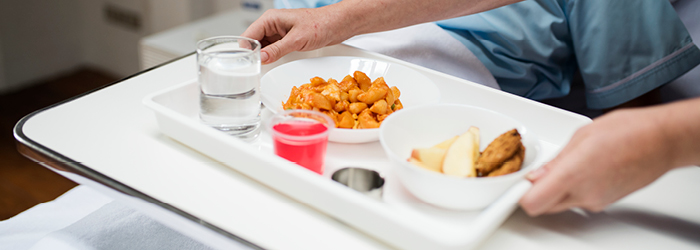Hospice Nutrition and Hydration for Your Patients

Hospice care requires hard conversations that lead to difficult decisions by healthcare professionals and their patients and families. One of the most challenging discussions is about initiating, maintaining or withdrawing artificial nutrition and hydration (ANH) as a patient nears the end of life.
Such decisions are complicated by multiple medical guidelines and ethical issues, and compounded by patients’ and families’ emotions, their difficult questions about withholding food and water at the end of life, and the religious, cultural, spiritual and personal influences that surround a loved one’s imminent death.
Healthcare professionals can navigate these difficult decisions by engaging in conversations that are informed by their expert medical-clinical skills and guided by empathy.
Develop an Individualized Hospice Care Plan
Advance care planning represents an ideal approach with a patient and family to elucidate wishes and values before the patient becomes unable to state their preferences. Clinicians can educate patients and families about the natural dying process, including the role of ANH. The hospice care team can be an invaluable resource to facilitate such conversations so that medical, ethical and professional standards are met.
Because each patient’s disease, goals of care and needs are different, decisions about ANH should always be made after a thoughtful, honest and informative conversation that addresses:
- The patient’s specific diagnosis and prognosis: How will nutrition/hydration affect both?
- Medical issues: What are the indications for or against ANH?
- Non-medical issues: What are the patient’s/family’s personal, cultural and religious beliefs and values? How can they be honored within a hospice care plan?
- Quality of life: Will artificial feeding/hydration increase or decrease suffering?
- Goals of care: Will care-related decisions support the patient’s wishes and values?
Educate Family Members About the Dying Process
Current evidence does not support the contention that withholding food and water at the end of life contributes to suffering and/or life prolongation. Such evidence should be incorporated into goals of care conversations and in the development of an individualized hospice care plan. As a patient’s status changes, so, too, should the hospice care plan.
Doctors and nurses must address emotional issues, too, by reminding families that they are not “giving up on” or “starving” a hospice patient who stops eating or drinking. Instead, clinicians should educate patients and families about the body’s natural dying process, which includes the shutting down of the digestive tract and an increasing inability to process food and fluids. Families can be reassured in the knowledge that as food and water intake slows, the patient’s body often releases “feel-good” endorphins as its own natural form of pain relief.
Tube Placement: Benefits vs. Risks/Complications?
General guidelines address feeding tubes for hospice patients:
- Existing feeding tube: If patients are admitted to hospice with feeding tubes already in place, doctors should work closely with patients, families and caregivers to decide if and when to decrease or discontinue ANH. As one approaches end of life, ANH can contribute to discomfort, aspiration and development of pressure ulcers without the benefit of prolonged survival.
- Placing a feeding tube: Generally, feeding tubes are not placed in patients once they are enrolled in hospice care. On rare occasions, a decision to proceed with feeding tube placement is made in conjunction with the patient, family and hospice interdisciplinary team.
In general, studies demonstrate that ANH does not prolong life or increase longevity, but it can be associated with numerous complications that diminish the patient’s quality of life. Common complications include irritation, infection, blockage, discomfort, aspiration pneumonia, bleeding, reflux, uncontrolled diarrhea, limited socialization/movement, frequent tube replacement/removal, lack of appropriate oral care, and increased use of physical and/or chemical restraints. Tube feeding at the end of life also can create patient sensations of “drowning” or uncomfortable fullness.
As an example of diagnosis-dependent guidelines, the American Geriatric Society, American Academy of Hospice and Palliative Medicine, and The Society for Post-Acute and Long-Term Care Medicine do not recommend feeding tubes for patients with advanced Alzheimer’s/dementia. Instead, oral assisted feeding is recommended.
Common Questions from Healthcare Professionals about End-of-Life ANH
- Do feeding tubes prevent malnutrition? Not necessarily. Many people on hydration and feeding tubes still experience malnutrition as a result of the underlying disease, immobility and neurologic deficits—not a lack of food/water.
- Do feeding tubes prevent pressure sores or hasten their healing? Artificial nutrition/hydration can increase urine output, stools, diarrhea, upper airway secretions, and immobility—all of which can exacerbate pressure sores or interfere with healing of existing sores/lesions.
- Do feeding tubes decrease the mortality rate? According to studies, life expectancy is nearly identical in patients who are offered end-of-life ANH and those who are not.
- Do feeding tubes prevent aspiration pneumonia? Current data does not show that feeding tubes decrease the risk of aspiration pneumonia or regurgitated gastric contents. In fact, some studies indicate increased risk of aspiration as patients with tubes can still aspirate gastric contents and oral secretions, or suffer aspiration pneumonia from other organic causes.
Educate Families About End-of-Life Care
Healthcare professionals are advised to encourage family members to follow accepted hospice guidelines around food and water at the end of life:
- Offer small sips of water/liquids, ice chips, hard candy or very small amounts of food via spoon if the patient can still eat or drink. Take cues from the patient when to stop.
- Keep a patient’s lips and mouth moist with swabs, a wet wash cloth, lip balm or moisturizers if they are no longer able to drink.
- Encourage family members to provide alternative forms of nourishment: conversation, loving touch, music, singing, poetry, humor, pet visits, gentle massage, reading, prayers or other acts of caring and love.

Check Hospice Guidelines
Get diagnosis-specific guidelines in our hospice eligibility reference guide.
Hospice Guidelines by Diagnosis Refer Your Patient